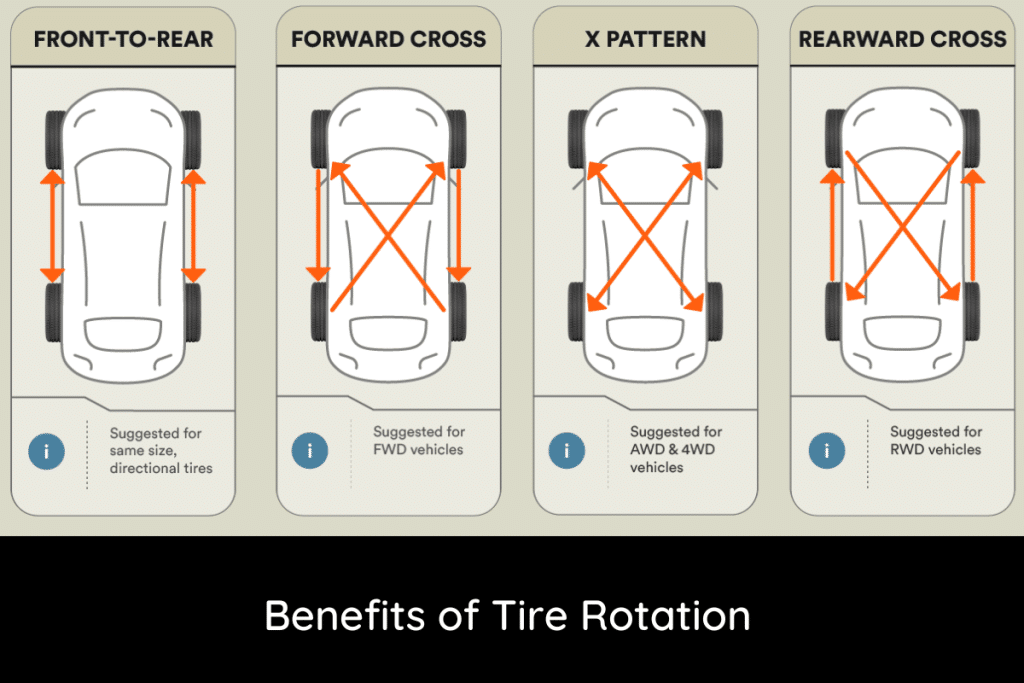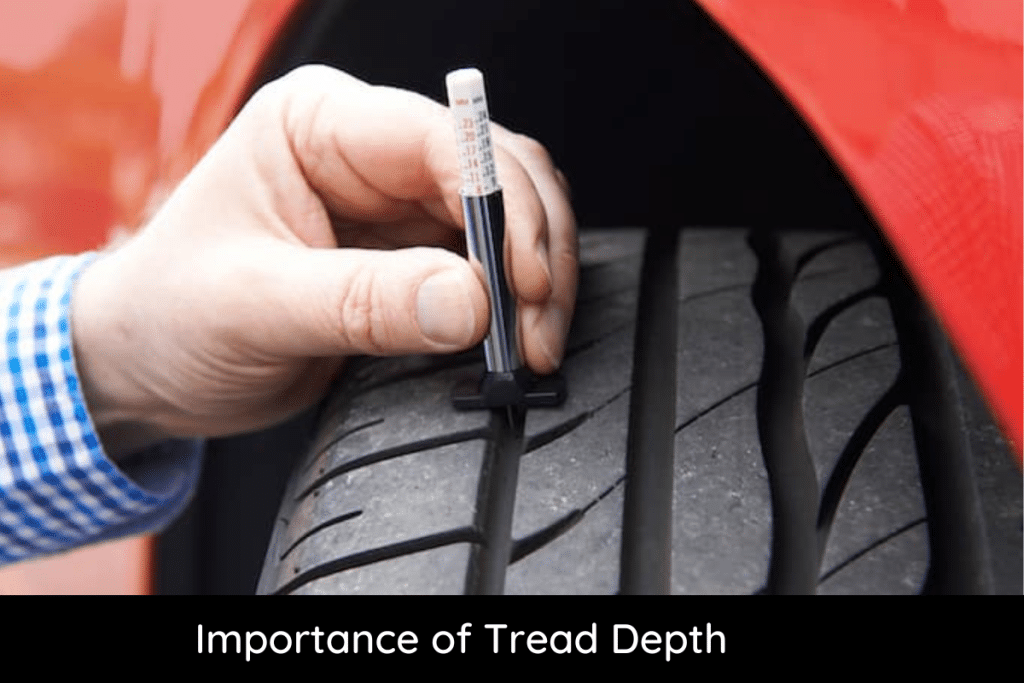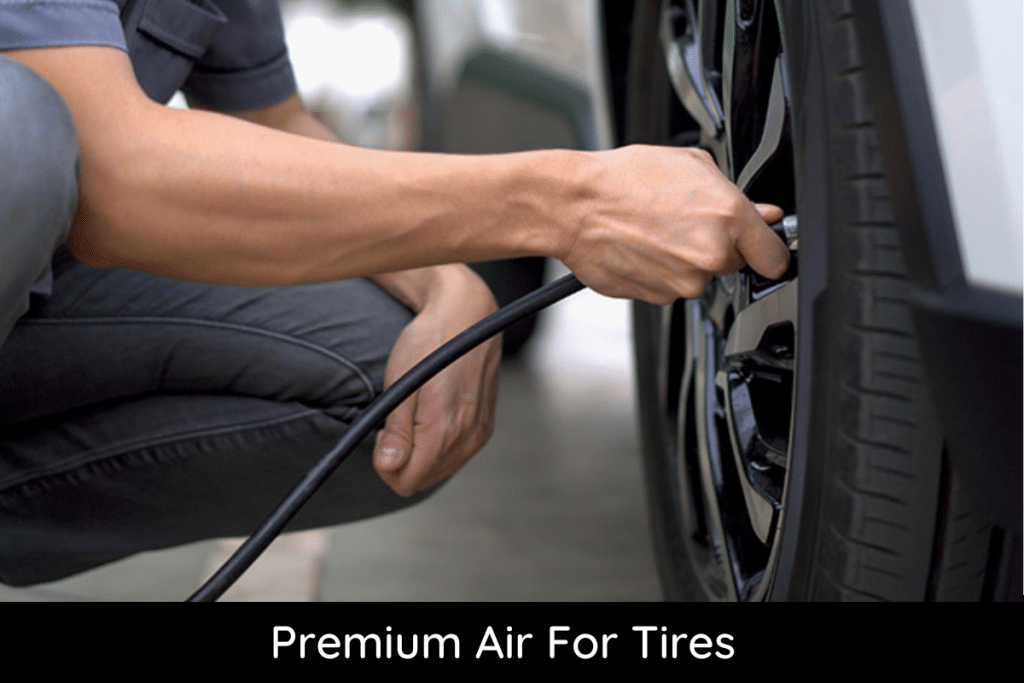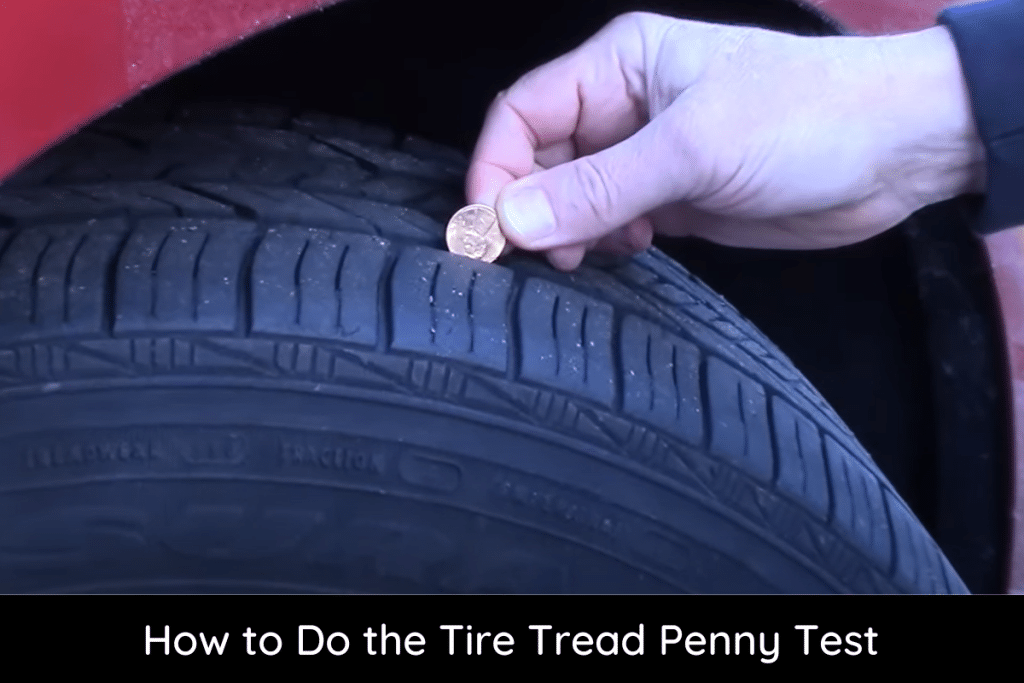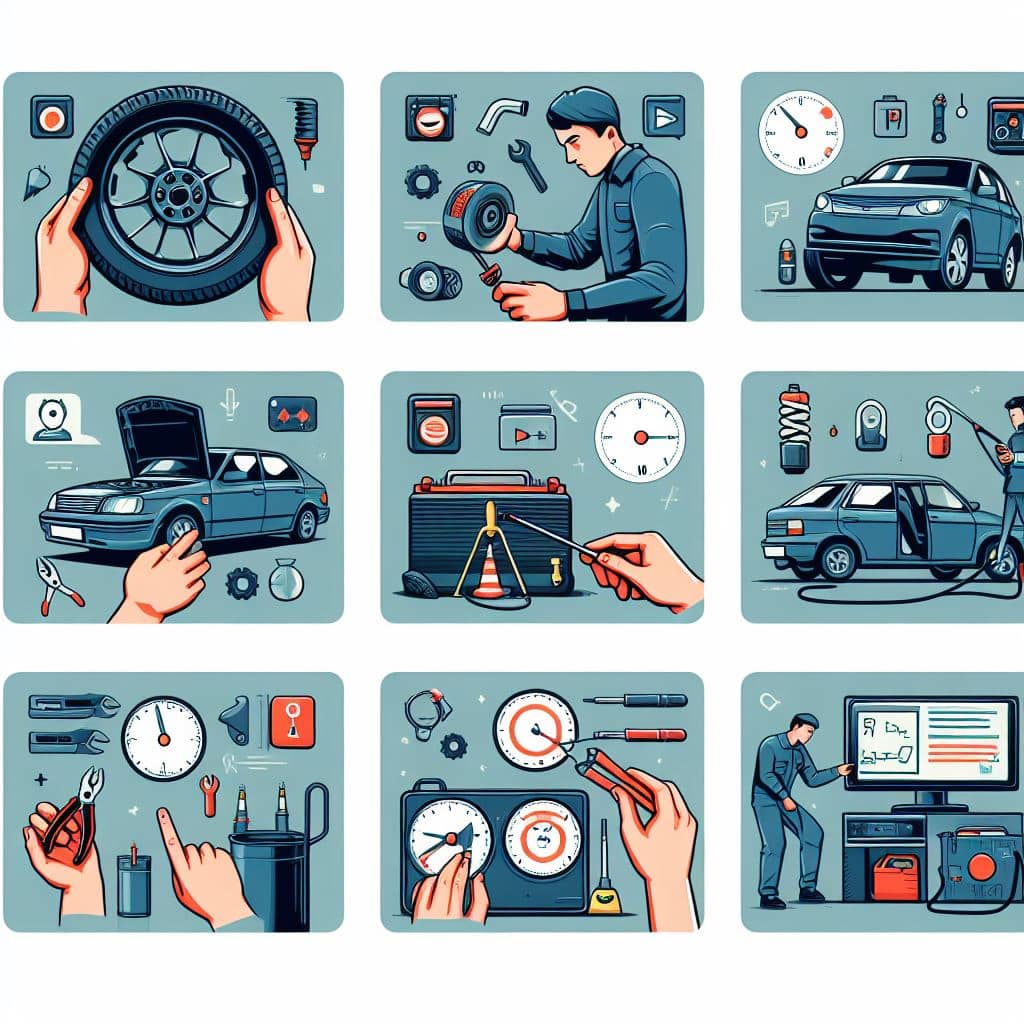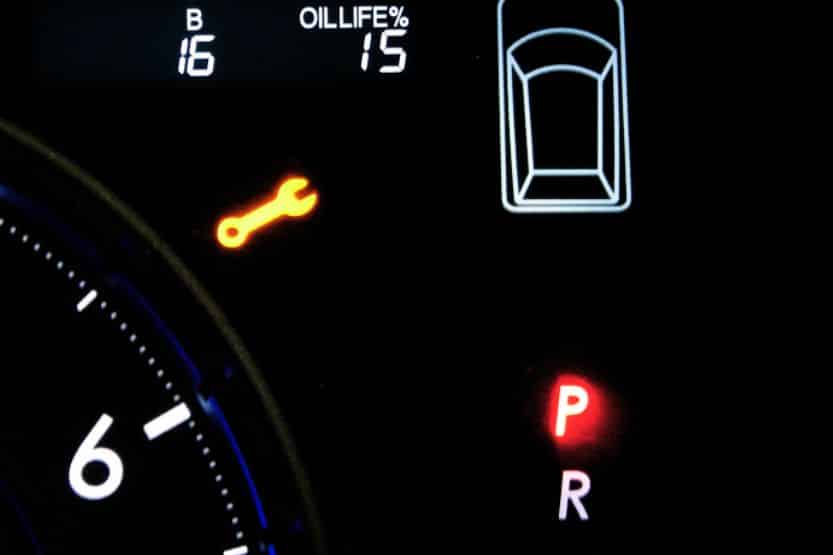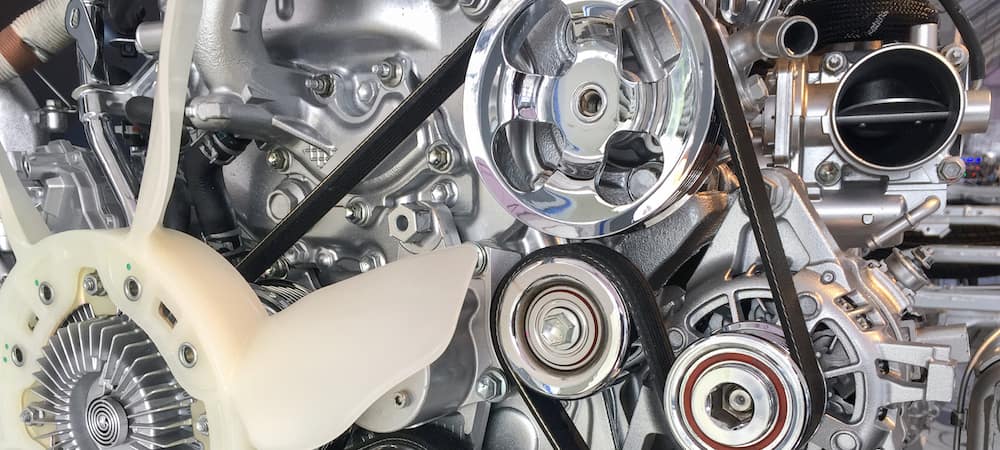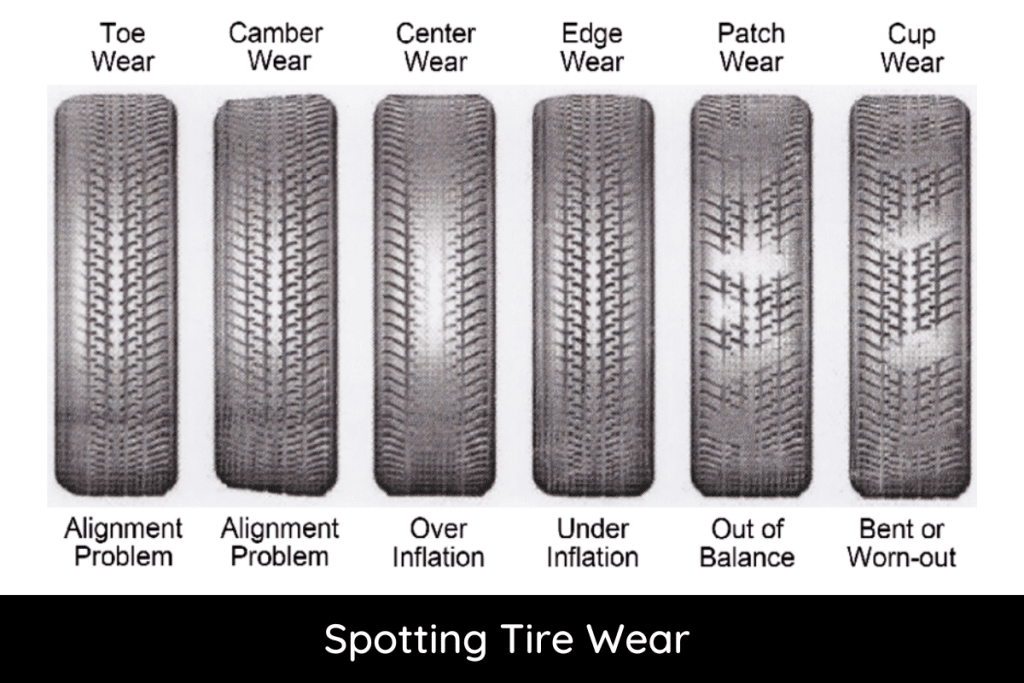
To recognize signs of tire wear and tear, you should look for the following common indicators:
- Uneven Tread Wear:
- Inner Edge Tread Wear: Indicates misalignment or negative toe and camber.
- Worn Outer Edges: Can be a sign of underinflation.
- Worn Out Center: May result from overinflation.
- Feathered Tires: Suggests the need for an alignment.
- Other Signs:
- Cracking or cuts in the sidewalls.
- Bulges or blisters on the sidewall.
- Excessive vibration may indicate misalignment, unbalanced wheels, or suspension issues.
Regular visual inspections, checking for proper inflation, and monitoring tread depth are essential for maintaining tire safety and performance.
Signs of Tire Wear and Tear
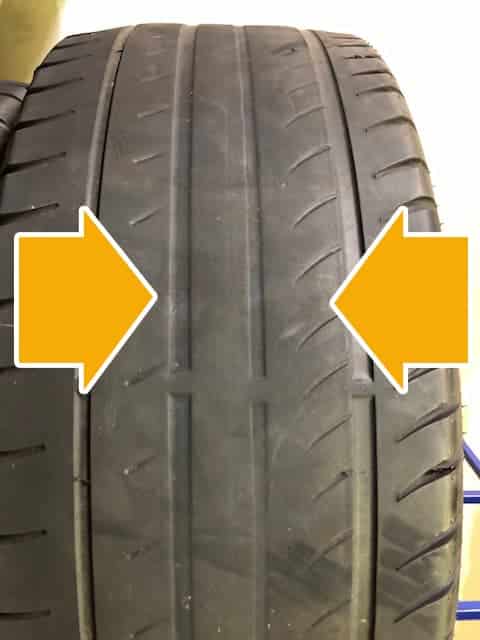
Recognizing signs of wear and tear on your vehicle’s tires is crucial for maintaining safety, performance, and efficiency.
Here are key signs to look out for:
Bald Spots
- What Are They? Bald spots are areas on the tire where the tread has worn away completely, leaving a smooth surface. These spots compromise the tire’s integrity and significantly reduce its ability to grip the road, particularly in wet conditions, leading to increased stopping distances and a higher risk of losing control.
- Causes: Bald spots often result from improper tire inflation, with over-inflation leading to wear in the center of the tire and under-inflation causing wear on the edges. Suspension issues, such as worn shock absorbers or misaligned wheels, can also cause uneven distribution of weight on the tires, leading to localized bald spots.
- Risks: Tires with bald spots are more susceptible to punctures and blowouts. The reduced traction increases the risk of accidents, especially under braking or in wet conditions.
Uneven Wear
- Definition: Uneven wear refers to tires that show varying levels of tread depth across their surface. This can manifest in several patterns, each indicating different underlying issues.
- Patterns of Uneven Wear:
- Edge Wear: Wearing primarily along the outer edges indicates under-inflation.
- Center Wear: Wearing down the center of the tire suggests over-inflation.
- Cupping: Also known as scalloping, this wear pattern shows dips around the tire’s surface and can indicate suspension problems.
- Spotting Uneven Wear: Regularly inspect your tires from multiple angles. Look for differences in tread depth across the tire and feel for raised or lowered sections. Early detection of uneven wear can help address mechanical issues before they cause further damage.
Sidewall Damage
- Overview: Damage to the tire’s sidewall can include cracks, cuts, bulges, or blisters. These defects compromise the tire’s structural integrity, making it more prone to failure.
- Causes: Sidewall damage can result from impact with curbs or potholes, aging (as the rubber deteriorates over time), or exposure to harsh chemicals. Bulges or blisters often indicate internal damage, such as a broken cord or separation of the tire layers.
- Importance of Immediate Action: Sidewall damage is a serious concern that can lead to sudden tire failure. If you notice any signs of sidewall damage, have the tire inspected by a professional immediately. In many cases, tires with sidewall damage will require replacement to ensure safety.
Understanding these signs of tire wear and tear is vital for any driver. Regular tire inspections can help identify these issues early, allowing for corrective action to be taken before they lead to more significant problems or potential accidents.
Preventing Tire Wear and Tear
Proper tire maintenance is essential for maximizing the lifespan of your tires, ensuring safety on the road, and optimizing vehicle performance.
Maintain Proper Tire Pressure
- Regular Checks: Tire pressure should be checked at least once a month and before long trips. Use a reliable tire pressure gauge to ensure accurate readings.
- Adjust According to Specifications: Inflate or deflate your tires according to the manufacturer’s recommended pressure levels, which can typically be found on a sticker inside the driver’s door jamb or in the vehicle’s manual.
- Impact on Wear: Keeping tires properly inflated reduces the risk of uneven wear and extends tire life. Over-inflation leads to excessive wear in the center of the tire, while under-inflation causes wear on the edges.
Regular Tire Rotation
- Frequency: Rotate your tires according to the schedule recommended by the vehicle manufacturer or tire manufacturer, usually every 5,000 to 7,500 miles.
- Benefits: Rotation ensures even tire wear by changing the positions of the tires on the vehicle. This is especially important for front-wheel-drive vehicles, where the front tires wear out faster due to steering and power delivery.
Alignment Checks
- Schedule Regular Alignments: Have your vehicle’s alignment checked annually or if you notice signs of uneven wear or the vehicle pulling to one side. Misalignment can cause rapid and uneven tire wear.
- Correction: Proper alignment adjusts the angles of the tires so that they come into contact with the road in the right way, ensuring even wear and extending tire life.
Balance Your Tires
- Importance of Balancing: Imbalanced tires can lead to vibration, uneven wear, and increased stress on the vehicle’s suspension. Have your tires balanced whenever you get them rotated or notice a vibration.
- Process: Tire balancing involves adjusting the weight distribution around the tire and wheel assembly to ensure a smooth ride and even wear.
Use the Right Type of Tires
- Match Tires to Driving Conditions: Use tires that are appropriate for your typical driving conditions. For example, winter tires for snowy conditions, all-terrain tires for frequent off-road use, and high-performance tires for sports cars.
- Impact on Wear and Safety: Using the correct type of tire for your driving conditions minimizes wear and maximizes safety and performance. For instance, winter tires provide better traction in snow and ice, reducing the risk of accidents and wear under harsh conditions.
Inspect Tires Regularly
- Visual Inspections: Regularly inspect your tires for signs of wear, damage, or foreign objects lodged in the tread. Catching and addressing these issues early can prevent further damage and extend tire life.
When to Replace Your Tires

Knowing when to replace your tires is crucial for maintaining vehicle safety, performance, and compliance with legal requirements.
Tread Depth
- Minimum Legal Requirement: The legal minimum tread depth is 2/32 of an inch in many places. Tires below this threshold do not provide adequate grip, especially in wet conditions, and must be replaced.
- Measuring Tread Depth: Use a tread depth gauge for an accurate measurement. Alternatively, the penny test can provide a quick check. Insert a penny into the tread groove with Lincoln’s head facing down; if you can see the top of Lincoln’s head, the tread is below 2/32 inch, and the tire needs replacing.
- Safety Recommendations: Even before reaching the legal minimum, consider replacing tires. Some experts recommend replacement at 4/32 inch of remaining tread for wet conditions and 5/32 inch for snow-covered roads to ensure adequate traction.
Age
- General Guidelines: Tire manufacturers generally recommend replacing tires every six to ten years even if the tread depth is adequate. The exact timeframe can vary based on the tire brand, model, and usage conditions.
- Determining Tire Age: The tire’s age can be found on the sidewall, indicated by a four-digit code as part of the DOT number. The first two digits represent the week, and the last two the year of manufacture. For example, “3217” means the tire was made in the 32nd week of 2017.
- Age-Related Concerns: Over time, tires degrade due to exposure to environmental conditions, even if they’re not being used. This aging process can lead to reduced elasticity and cracking, compromising the tire’s structural integrity.
Condition
- Visible Damage: Look for signs of sidewall bulges, deep cuts, punctures, or significant cracking. These defects can weaken the tire, making it prone to sudden failure.
- Vibration or Noise: Unusual vibrations or noise while driving can indicate internal tire damage, misalignment, or imbalance. If these issues persist after checking alignment and balance, inspect the tires for internal damage, which might necessitate replacement.
Legal Requirements for Minimum Tread Depth
- Compliance: Ensure you’re familiar with and comply with local regulations regarding minimum tread depth to avoid fines and ensure your vehicle is safe for road use.
- Measurement: Use a tread depth gauge to measure beyond the penny test precisely. This tool provides an exact reading, helping you decide whether it’s time for a replacement based on legal and safety standards.
Replacing tires at the right time is about adhering to legal standards and ensuring your safety and that of other road users.
Regular inspections and understanding the signs of wear and aging can help you make informed decisions about tire replacement, keeping your vehicle in optimal condition for the road.
What Are The Consequences Of Driving With Worn-out Tires
Driving with worn-out tires can have serious consequences, including:
- Reduced Traction: Worn-out tires have reduced ability to grip the road, especially in wet or slippery conditions, increasing the risk of accidents and skidding.
- Increased Stopping Distance: Tires with low tread depth affect a car’s ability to brake quickly and efficiently, leading to longer stopping distances, particularly on wet roads.
- Hydroplaning: Worn tires are more likely to cause hydroplaning, where the tire loses contact with the road surface, and the vehicle becomes difficult to control, especially in wet conditions.
- Blowouts: Worn-out tires are more susceptible to sudden blowouts, which can be dangerous, especially at high speeds.
- Loss of Control: Worn tires can lead to a loss of control, reduced steering responsiveness, and increased risk of accidents, especially during sudden stops or emergency maneuvers.
- Reduced Fuel Economy: Underinflated worn tires can decrease fuel efficiency, leading to higher fuel costs.
- Safety Risks: The National Highway Traffic Safety Administration reports nearly 11,000 tire-related crashes yearly, with nearly 200 resulting in fatalities.
It’s important to regularly inspect tires for wear and promptly address any issues to ensure road safety.


